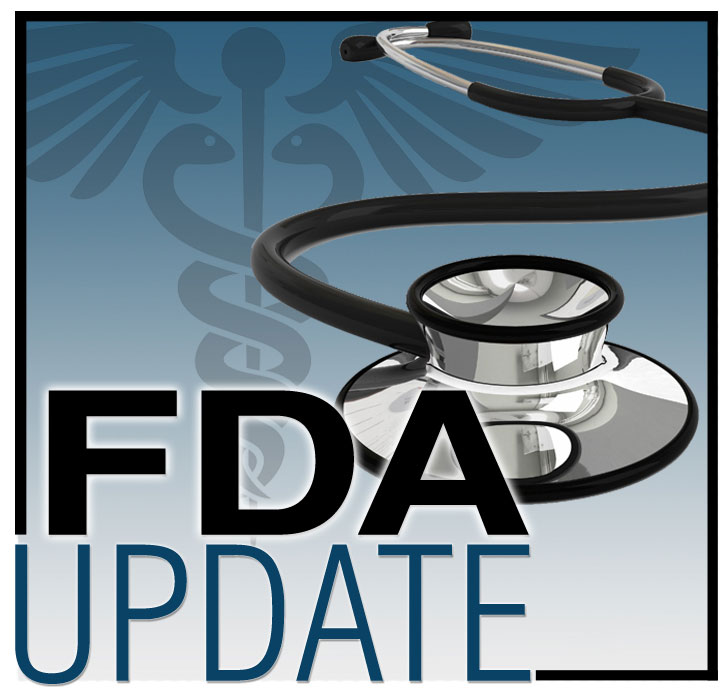
On March 29, 2018, the U.S. Food and Drug Administration (FDA) granted accelerated approval to blinatumomab (Blincyto®) for the treatment of adult and pediatric patients with B-cell precursor acute lymphoblastic leukemia (ALL) in first or second complete remission with minimal residual disease (MRD) greater than or equal to 0.1%.
Approval was based on the open‑label, multicenter, single-arm BLAST trial (NCT 01207388) that included 86 patients who were at least 18 years of age, had received at least 3 chemotherapy blocks of standard ALL therapy, were in complete hematologic remission (defined as < 5% blasts in bone marrow, absolute neutrophil count > 1 Gi/L, platelets > 100 Gi/L) and had MRD at a level of greater than or equal to 0.1% using an assay with a minimum sensitivity of 0.01%. Blinatumomab was administered at a constant dose of 15 mcg/m2/day (equivalent to the recommended dose of 28 mcg/day) intravenously for all treatment cycles. Patients received up to 4 cycles of treatment. Following treatment with blinatumomab, 45 out of 61 (74%) patients in CR1 and 14 out of 25 (56%) patients in CR2 underwent allogeneic hematopoietic stem cell transplantation in continuous hematologic complete remission.
Efficacy was based on both achievement of undetectable MRD within one cycle of blinatumomab treatment and hematological relapse-free survival (RFS). The assay used to assess MRD response had a sensitivity of 0.01% for 6 patients and less than or equal to 0.005% for 80 patients. Overall, undetectable MRD was achieved by 52 patients in CR1 (85%; 95% CI: 74%, 93%) and 18 patients in CR2 (72%; 95% CI: 51%, 88%). The median estimated hematological RFS with majority of patients transplanted was 35.2 (range: 0.4, 53.5) months for patients in CR1 and 12.3 (range 0.7, 42.3) months for patients in CR2.
The most common adverse reactions to blinatumomab in at least 20% of patients with MRD-positive B-cell precursor ALL were pyrexia, infusion related reactions, headache, infections (pathogen unspecified), tremor, and chills. Serious adverse reactions were reported in 61% of patients. The most common serious adverse reactions in at least 2% of patients included pyrexia, tremor, encephalopathy, aphasia, lymphopenia, neutropenia, overdose, device related infection, seizure, and staphylococcal infection. Adverse reactions of Grade 3 or higher were reported in 64% of patients. Discontinuation of therapy due to adverse reactions occurred in 17% of patients; neurologic events were the most frequently reported reasons for discontinuation. There were 2 fatal adverse events that occurred within 30 days of the end of blinatumomab treatment (atypical pneumonia and subdural hemorrhage).
See Full Prescribing Information for recommended dose by patient weight and schedule.
FDA granted this application priority review and orphan designation. Continued approval for the new indication is contingent upon verification and description of clinical benefit in confirmatory trials. A description of FDA expedited programs is in the Guidance for Industry: Expedited Programs for Serious Conditions-Drugs and Biologics..
Healthcare professionals should report all serious adverse events suspected to be associated with the use of any medicine and device to FDA’s MedWatch Reporting System by completing a form online, by faxing (1-800-FDA-0178) or mailing the postage-paid address form provided online, or by telephone (1-800-FDA-1088).
Follow the Oncology Center of Excellence on Twitter @FDAOncology.
Check out recent approvals at the OCE’s podcast, Drug Information Soundcast in Clinical Oncology (DISCO).
In collaboration with the FDA and as a service to our members, ONS provides updates on recent FDA approvals and other important FDA actions (e.g., updated safety information, new prescribing information) pertaining to therapies for patients with cancer. This allows the agency to inform oncologists and professionals in oncology-related fields in a timely manner. Included in the FDA updates is a link to the product label or to other sites for additional relevant clinical information. In supplying this information, ONS does not endorse any product or therapy and does not take any position on the safety or efficacy of the product or therapy described.





